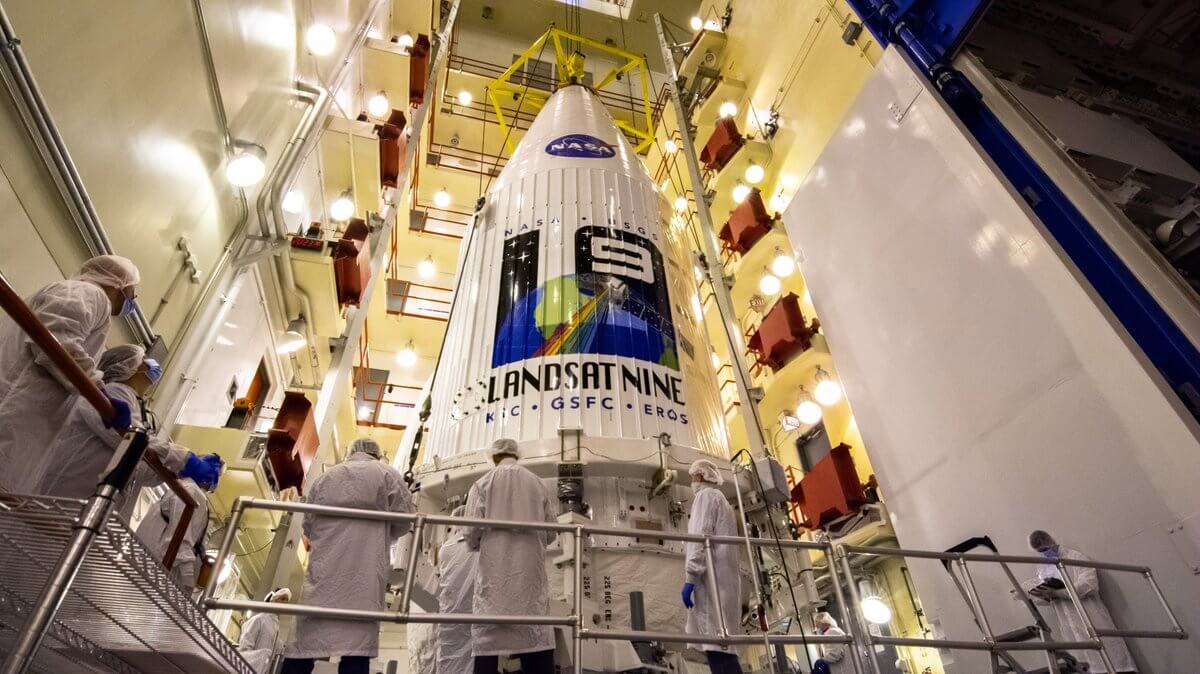
Redwire is providing critical navigation technology for the Landsat 9 satellite mission, an extension of the venerable Landsat program for monitoring, understanding, and managing Earth’s land resources. Scheduled to launch no earlier than September 27, 2021, Landsat 9 is a partnership between NASA and the U.S. Geological Survey and illustrates how our activities in space can have a crucial and positive impact on our lives here on Earth.
First launched in 1972, the Landsat program provides the longest continuous space-based record of Earth’s land. Landsat satellites orbit Earth every day, supplying critical information about Earth’s resources and environment, including agricultural productivity, ice sheet dynamics, urban growth, forest monitoring, natural resource management, water quality, and supporting disaster response. For almost 50 years, it has been an invaluable resource for land managers, scientists, policymakers, and the public to understand our evolving use of Earth’s resources.

Redwire has delivered multiple Coarse Sun Sensor (CSS) detectors, developed by Redwire subsidiary Adcole Space, for the Landsat 9 mission. CSS technology will enable the Landsat 9 satellite to precisely determine its position in space and give mission control solar array pointing, sun acquisition, fail-safe recovery and sun presence data capabilities, helping to ensure that Landsat 9 meets its objectives and builds upon the success of the previous Landsat missions by providing vital land imaging data.

The Landsat 9 Mission: More and Enhanced Data
A key driver for developing the new Landsat 9 satellite is reducing the risk of a Landsat data gap, a high priority for the U.S. Sustainable Land Imaging Program.
Landsat 9 will join Landsat 8 in orbit. The satellite will replace Landsat 7, which was launched in 1999, and take its place in orbit (8 days out of phase with Landsat 8). The combined revisit time for data collection for Landsat 9 and Landsat 8 will be every eight days.
Landsat 9 will have a higher imaging capacity than previous Landsat satellites, allowing more valuable data to be added to the Landsat global land archive. After collecting data for seven years, Landsat 8 has added 1.86 million images to the archive and adds approximately 700 new scenes each day. Landsat 9 will maintain and build upon this record of Landsat data collection, adding to a multi-decade record of changes on Earth’s surface.

The Coarse Sun Sensor
Each CSS detector is a small, rugged sensor mounted onto the solar array with conical symmetry in its field of view. The CSS detector draws zero power and generates a short circuit current that varies approximately as a cosine with sun angle. The CSS can achieve full performance during and after exposure to very high radiation levels. Multiple CSS units can be used as direction cosines or any other customer-desired configuration for sun angle determination.

The CSS has a strong history of spaceflight spanning more than 40 years. The CSS has successfully performed in highly elliptical, geostationary, and low and medium Earth orbits about the Earth, and on various interplanetary missions to the Moon and Mars, and in deep space. CSS technology has successfully performed on multiple GPS platforms and on numerous commercial geostationary orbit missions. Customers select Redwire CSS technology because it can withstand temperature extremes, high radiation and severe shock and vibration environments. As of 2021, there are close to 1000 CSS units in flight.
Continuing a Critical Program
Today’s increased rates of global land cover and land use change have profound consequences for weather and climate, ecosystem function and services, carbon cycling and sequestration, resource management, the national and global economy, human health, and society. It has never been more important to observe our evolving Earth and understand how these many changes might impact generations to come.
For more information about Redwire’s Coarse Sun Sensor, click here
Coarse Sun Sensor (Cosine Type)
For more information about the Landsat 9 mission, click here https://landsat.gsfc.nasa.gov/landsat-9/landsat-9-overview




